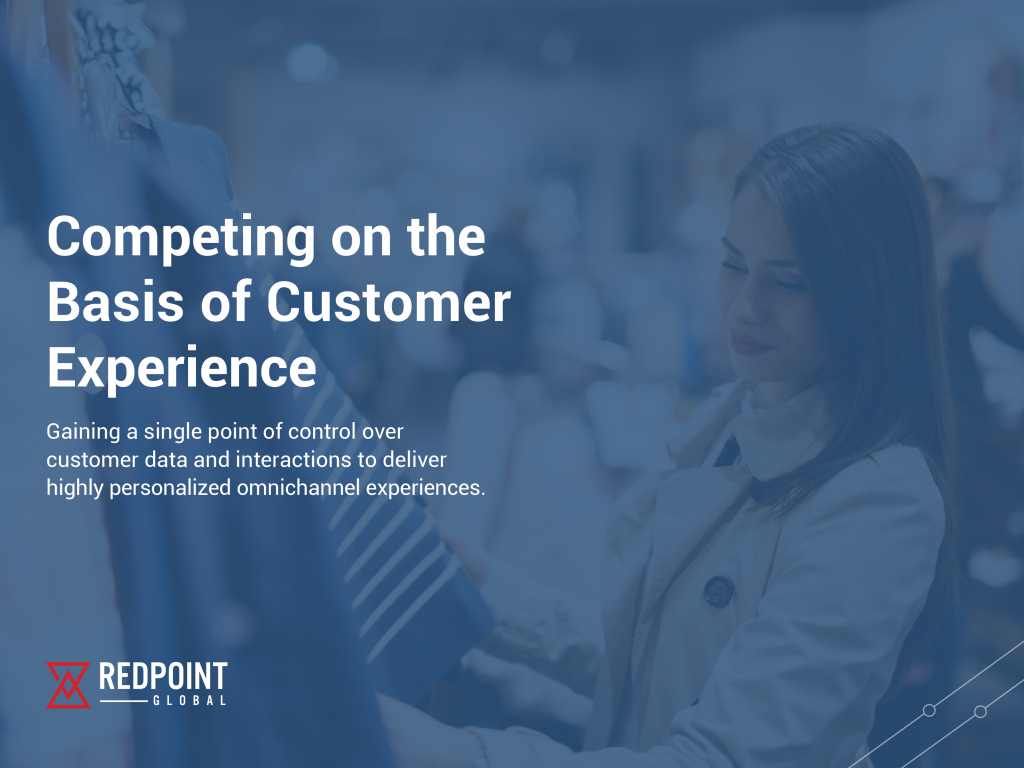 Customer experience is a competitive advantage for brands who can deliver highly relevant, hyper-personalized journeys to individual consumers.
Customer experience is a competitive advantage for brands who can deliver highly relevant, hyper-personalized journeys to individual consumers.
Customer profiling is the method marketers have used in the past to segment consumers. But to achieve the level of personalization customers expect today, we need to set a new standard.
First, let’s start with the basics. What is customer profiling?
Customer profiles are a way of describing one customer, or a segment of customers, with specific demographic, geographic, and psychographic information, in addition to details like purchase history or buying patterns.
Traditional Approaches to Customer Profiling
Customer profiles allow you to segment consumers and tailor messaging to specific audiences. And as every marketer knows, the more relevant the content, the better the experience.
The traditional approach to customer profiling typically includes five steps:
- Gathering data on your customers: Your data comes in all sources and types from all databases and engagement systems. CRM, POS, eCommerce, mobile, call center – leverage every interaction touchpoint that you possess. Of course, not just any data will do. It’s essential to ensure and maintain data quality and identify customers across each of your channels, or ‘last miles’ to the consumer.
- Analyzing path-to-purchase behavior: Now it’s time to start making meaning out of your precise, accurate, and complete data. Customer journeys are no longer static and linear. They are dynamic, multi-event and multi-channel. Every path to purchase is unique, and customers expect to be treated that way.
- Identifying patterns: Discovering patterns in the buyer’s journey helps you realize strengths and weaknesses in the customer experience you deliver. Leverage technology like artificial intelligence (AI) and machine learning to classify and predict customer behavior and intent, and to automate these processes. This allows you to allocate your time to more meaningful tasks like segmenting customers and determining the next-best action, offer, or message to serve them.
- Segmenting customers: Armed with insights, you can now create customer profiles and categorize consumers according to demographic, geographic, psychographic, and buying behavior information. How you segment is dependant on your goals and objectives. Are you looking to increase customer lifetime value? Your segments will probably focus on behavior and intent, like propensity to buy or average order value. Are you looking to acquire more new customers? Those segments might be based more on demographic and psychographic information and will differ significantly from customers you are trying to grow and retain.
- Prioritizing which segments to target: Depending on your strategy and goals, you can now identify which customer profiles are most important. Deliver the most relevant messages for each audience segmentation and tailor customer journeys accordingly.
And once this process is complete, it’s time to deploy a campaign in the relevant channel, measure results, and optimize future iterations. That’s customer experience done and dusted, right?
Not quite.
Challenges with Yesterday’s Customer Profiling Approaches
While this process has sufficed in the past, traditional segmentation and customer profiling is no longer enough. Customers expect personalized experiences, but 75 percent of consumers say brands are struggling to meet their expectations.
Something’s gotta give.
In order to deliver the most personalized omnichannel customer experiences, the way we build customer profiles has to change from a segment-of-many mindset to a segment-of-one.
The blocker for most organizations is the data. Today, 60 percent of marketers use at least 10 martech systems. That means that customer data is siloed and it’s extremely difficult to:
- Aggregate all your data
- Identify customers across every touchpoint (including matching, de-duplicating, and householding capabilities)
- Build a single customer view
Without these abilities, it becomes more challenging to analyze quality data and determine next-best-actions for individual customers. Additionally, delivering relevant offers and messages in your customer’s preferred channel – in cadence with their unique journey – is a tough hurdle to surmount without the right foundation.
Gaining the level of understanding necessary to develop comprehensive customer profiles – and then act on those insights in a meaningful, personalized way – is not scalable. That’s why traditional customer profiling results in the segment-of-many approach, rather than a segment-of-one.
If you need help integrating customer data to build accurate, complete, and up-to-date customer profiles, book a meeting to find out how Redpoint can help.
Best Practices for the New Standard
As customer experience becomes the battleground for brands, customer data becomes more important. To stay competitive and deliver the experiences customers expect, customer profiling must evolve.
Aggregating and integrating all data into one place – regardless of data source or system – is a major step towards advancing customer profiling capabilities. Attaining a single point of control over customer data, along with identity resolution capabilities such as matching, cleansing, and householding, helps build a Golden Record for every customer.
The Golden Record is the new standard for customer profiles. This version of a profile combines all behaviors, transactions, preferences, and intent information and persists across the customer lifecycle. Since customer journeys are no longer linear and static, the Golden Record encompasses the dynamic buying process of each consumer so you can tailor their customer journey.
Robust, up-to-date profiles give you the base you need to make accurate next-best action decisions for each individual customer. Finally, leveraging your Golden Record will inform the most relevant touchpoint and timing to deliver the offer or message.
Embracing the evolution of customer profiling has a major impact on your organization; when you deliver superior customer experiences, increases engagement, retention rates, and customer lifetime value will follow.
RELATED ARTICLES
CDP Myths Debunked: More Than Just Another Data Platform
Redpoint Customers Tell Their Omnichannel Stories at TRANSCEND19
Data Matching and Identity Resolution: Keys to Hyper-Personalization

